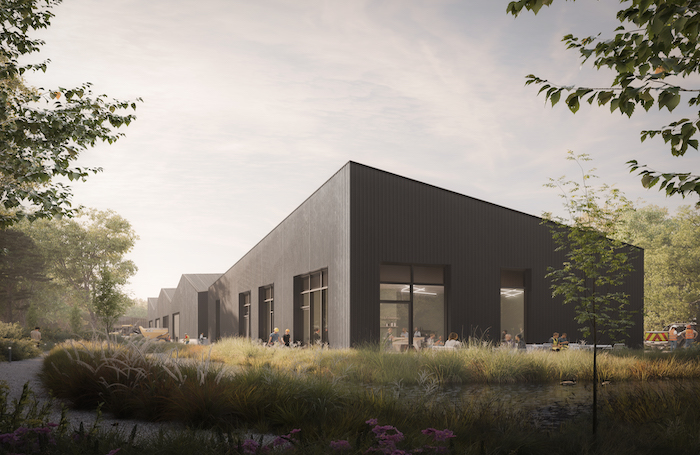James Dowen from Dowen Farmer Architects explains the practice's working process
A Monday morning meeting typically starts with 12 humans and three dogs around a large 200kg concrete table. Good job we are working in an uninsulated concrete car park accustomed to heavy loads. Personalised coffee mugs to the brim and a brief discussion of Friday night’s antics in John the Unicorn unfolds. Then a round robin of this week's work, each team member is responsible for presenting project updates to the studio, no matter whether an intern, director, or anyone in between, our horizontal structure means everyone has a voice. This flat tiered approach is fundamental to the culture that underpins the studio.
This coffee table chit chat spans a wide range of project scales and sectors. The plethora of projects discussed have a recurring theme of sites and briefs which would typically fall through the cracks of architectural discourse. Salt barns, dark kitchens, and land locked sites often don’t enjoy creative input. Our briefs typically focus on speed, cost, and operational constraints, a starting point from which the architecture has to prove its value rather than sap it.
Where do you look for inspiration?
In the everyday. We are fortunate enough to work in one of the world’s most exciting and cosmopolitan cities for creative thinking. You only need to look around to feel the energy of the urban renaissance. This is amplified by the studio being located in one of London's most interesting neighbourhoods - Peckham. It’s a thriving community of eccentricity, diversity, and hidden gems.
Every time we leave the studio we discover something new, whether that’s wading through the purple smoke-filled set of Doctor Who, finding a new level of bbq jerk chicken, or 'accidentally' walking into Legally Blonde the musical. Ideas are all around us and we have found the richest level of thinking comes from the people around us, the wider community and those not blinkered by industry specific methodology and parameters.
The flat structured nature of the studio and culture we have tried to create, we hope gives us the freedom to listen, learn and imagine; absorbing the environment around us but fundamentally enjoying the time we spend at work.
We are also big foodies, which is helpful given there are eight revolving restaurants about 10m from the studio door. We frequently sit around the concrete table with Peckham’s latest pop up cuisines splashed across the worktop, usually stuffing our faces, sharing ideas, experiences, and design positions. These are all varied and unique, and that eclectic mix of thinking, as far as one could imagine from a ‘house style’, makes for an inspiring way of working. This tight knit studio scale and environment is perfect for enabling craft and encouraging the younger team members to showcase the latest trends from their university- we love that, bottoms up.
We are ambitious in our approach to demonstrating all the possibilities that architecture can offer to young people. We hope that this mindset breeds opportunity. A key team member came straight out of school to work with us and now heads up our visualisation team. This year, we are collaborating with Blueprint for All to deliver a series of initiatives, with a focus on hosting inclusive events from our hub at Peckham Levels, alongside working within their mentoring scheme to build relationships and offer allies to young people to break down barriers to entering architecture.
We actively encourage our team to pursue wider accolades with a particular focus on sustainability, with a number of team members being PassivHaus accredited. This has led to the nomination of a number of awards, including Garnham Street being nominated for Arch Daily’s Building of the Year 2023, which was a hugely rewarding lovechild of when craft meets sustainability.
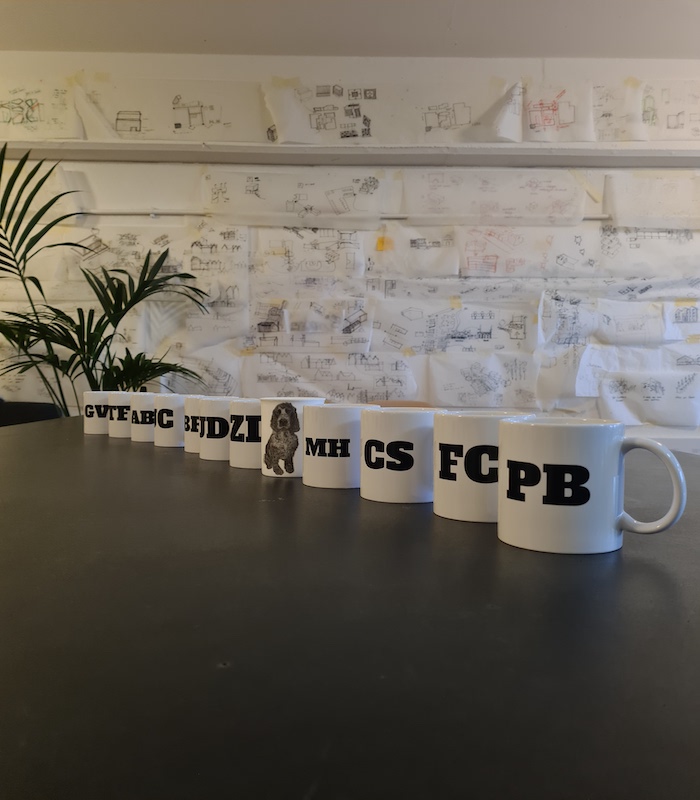
How do you incorporate environmental and social sustainability into your work?
It is the less glamorous projects which don’t frequent the glossy magazine articles that are in fact the biggest contributors to the UK’s carbon footprint. Approximately 25% of carbon emissions in the construction sector come from infrastructure and transport projects. We want to tackle this head-on as a studio.
Road vehicles represent 37% of global co2 emissions and the fifth largest landowner in the UK is the National Highways Agency.
These together create a huge opportunity for environmental and social innovation. Our studio has relished the opportunity to collaborate with National Highways on a number of projects to meet their ambitious targets. The National Highways have set out to become net zero through their own operations by 2030 and operate a net zero road network by 2050, something we relish being a part of.
Dowen Farmer Architects have focussed on optimising and consolidating a series of sprawling roadside depots into efficient, BREEAM Outstanding Buildings. The ambition is that these can also offer refuge for roadside ecology and unlock large parcels of brownfield land for future development and rewilding.
In practice, this vision requires months of targeted stakeholder engagement to understand the operational requirements of numerous specialised departments from salt gritters to traffic officers, and maintenance workers to control centre operatives. This enables us to explore new ways of vertical integration across the agency, creating multi-departmental amenity hubs which promote social integration and cross pollination.
Defining spaces where control centre staff and traffic officers are not restricted to radio communications but can share experiences in person - perhaps even while stretching out in a yoga studio.
It is hoped that this positive engagement with the challenges faced, can create future typologies which inspire the National Highways workforce to achieve and ask for more. Defining an architectural response that feels closer to a blend of high tech innovation hubs and art galleries than the rusting agricultural sheds in out of town industrial depots. Creating buildings that reflect the real and serious ambition of the UK’s 30 year road map to net zero.
Keep a lookout on Dezeen for the resurgence of the salt barn.
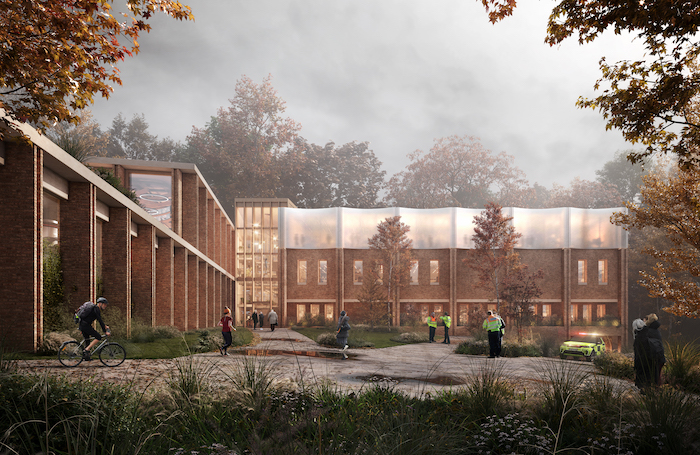
What’s the most exciting project you’ve got coming up and why?
Three hundred commercial kitchens over 12 storeys. A mouth-watering prospect. And what's in it for the wider community? 1200 jobs, a 500 person food hall, and edible public gardens.
The collective potential to make meaningful change in our cities, which 80% of the UK are living and working in, excites and motivates us. We like to explore new cities as a studio, often gravitating towards the historic fabric.
During our studio trip in December, we found ourselves in Porto, meandering between port houses enjoying the beauty and playfulness of the old town. We like to discover the rich narrative of how this layered tapestry of housing, industry, commerce, and trade evolved. The specific local nature of these communities provides clues as to how we can plan cities in a more sustainable way.
London is a city that has grown around manufacturing and making, a city that once generated its own energy, produced its own construction materials, and fabricated many of the products it sold. Rich communities grew around these industrial centres. However new masterplans come forward with only token ground floor offerings for employment use resulting in the majority of new residents overloading existing transport infrastructure to travel to places of work.
Discussing this issue with Arrant Land last week, they commented on a recently delivered housing scheme where the CGI showed a vibrant bakery and cycle cafe but the built reality is a blanked out window with a 3m high sticker of a french baguette. Yum.
Our projects for Dephna Group are exploring a new typology - multi-level industrial space positioned at the heart of upcoming residential masterplans in Brent and Ealing, ensuring food stickers are a thing of the past. These buildings provide over 10 storeys of development and off-site preparation/manufacture for London’s leading restaurants and local shops.
This new industrial typology enables the reintegration of making space back into the heart of the city, providing employment in suburban locations of outer London. We are excited about an architecture that can start to question this status quo and plug into the renaissance of craft, industry, and making which are slowly returning to cities.
These new kitchen hubs alongside the wider carbon reduction goals develop food destinations. Places that foster a sense of community and footfall are drawn in by having a plethora of food brands where everyone can come together and find something they love. Such a model takes inspiration from Sikh communities where sharing food is a gathering point around which relationships can be grown and communities can thrive.
The food halls generate a sense of excitement with over 50 to 100 different food outlets with food ordered via apps and shuttled down to the market space via smart food lifts akin to something from the Ministry of Magic. We anticipate this emerging sector will create 'microwaves' across the city in the coming years and are energised to be a part of the positive change.
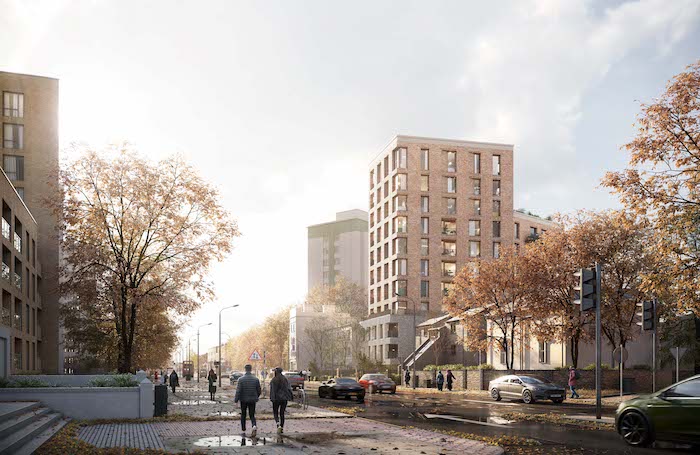
Do you think the use of these new technologies has given you advantage in gaining work?
"Wow. That was quick."
Eliciting these sorts of responses from clients is quite hard without embracing technology. As big practice alumni, we have solid foundations in setting up reliable systems that streamline our workflow. However, being a smaller practice enables us to continually challenge and test the systems and tools we use. This applies to the whole breadth of services we offer from digital fabrication, visualisations, drawing production, site feasibilities, 3D model sharing to name a few.
BIM has become a staple in the practice alongside the wider Autodesk construction platform representing an integral part of our workflow. However, we do often find that digital tools developed for use outside of architecture have a huge amount to offer. The ability to customise, code, and create our own bespoke tasking interface for all aspects of the practice is becoming increasingly important.
We try to follow a philosophy of finding or making the right tool for the idea rather than shoe-horning the project into an existing workflow, whether that is a new dynamo script or getting out the Rotring pens.
One of the tools we are becoming more excited about is the inevitable integration of artificial intelligence and machine learning into the design process. Rather than seeing AI as a threat, we see the visualisation and optioneering of tools like Mid-journey as having an ‘off the wall’ team member …a bit like the dogs.
The remarkable rapid generation of architectural images can be fine-tuned through some cunning AI poetry to provide an output that can be of real creative benefit. Yet these are only a starting point. Another example of machine learning is the automated testing of layouts through a set of parameters to compute >100. Kitchen and core approaches that could then be reviewed by the team to select a preferred option.
This level of efficiency liberates us as designers, with more time to invest in creating nuance, contextual narrative, subtlety, and playfulness. This further motivates the team to look for creative responses and solutions as we try to delegate the more mundane tasks and testing to the algorithm.
Whilst we embrace the opportunities that technology offers, there is no denying the mammoth challenges it poses. It is only a matter of time until a client asks why a 4K photorealistic visualisation takes two or three days to produce. Why the need for 3D modelling, texturing, rendering, and postproduction when an AI tool can produce four high definition images from text input in five seconds? Naturally, the tools to specifically tailor and adjust these images are not publicly available, but it is hard to imagine that they won’t be soon.
Therefore, it is imperative that architects can stay ahead of what they offer and harness this rate of progression. It’s not a stretch to imagine that in the near future, these architectural visualisations and creative tools will be two clicks away in the app store. How will we respond as creatives when clients can come to architects with photorealistic versions of their projects designed and visualised in AI on the way to an initial concept meeting?
That being said, architecture is first and foremost a social science, powered by people. The way in which we engage, work, and harness the technology is what will allow us to have the most meaningful and human impact on our built environment.
What would you say differentiates you most as a practice?
Given our small studio size, we have a surprisingly large breadth of work from listed buildings overlooking Regent’s Park to shopping centres in Kazakhstan. Yet that isn’t what truly differentiates us, which is undoubtedly the team.
Great people, making great projects happen.
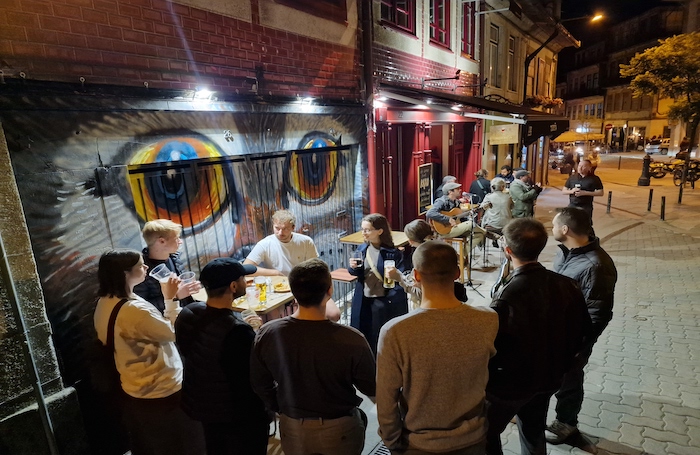
What benefits have you experienced from becoming a RIBA Chartered Practice?
The everyday practical support is really helpful and we use it often. As a small studio working on a number of large projects, the RIBA helpline is invaluable as it allows our business to get quick, reliable advice on complex issues such as appointments.
In addition to this, the suite of chartered guidance documents such as Quality Management Systems, up-to-date fire safety policy, and sustainable design toolkits are really helpful, particularly for framework questionnaires (which so often feel like they are tailored to larger companies). It's great to have RIBA’s robust backing to complete pre-qualification questionnaires with such a depth of policy and guidance which in turn helps to steer the studio.
Also, the RIBA Chartered Practice signboards cannot go without a mention. Tried and tested, they are still such an effective way to get our name out across the UK and peak interest at sites where we are delivering projects.
Are you part of the RIBA 2030 Climate Challenge? If so, how has been your experience so far?
Yes - working in a socially driven, retrofitted car park sets the tone of the studios position on sustainability.
We encourage each team member to take ownership of the RIBA 2030 Climate Challenge spreadsheet to submit their project-specific data and actively engage with the sustainability figures. Then we can compare as a studio across all projects to discuss what worked, what didn't, and areas to improve, and set future targets, with a lessons learned approach.
Some metrics are easier to measure than others. We don't focus solely on the number crunching. Simple and purposeful decisions can have a big impact on embodied and operational carbon at a base, conceptual level that all members of the design team can engage with. We push ourselves to ask more questions. Do we need that suspended ceiling? Can we reduce the slab depth here? What space suits this orientation?
Equally important to our approach is social sustainability and the more nuanced and intangible ways in which we can perform better as an industry to provide better cities for people to live in.
To find out more about Dowen Farmer Architects, visit the Dowen Farmer website or connect with them on Instagram and LinkedIn.
